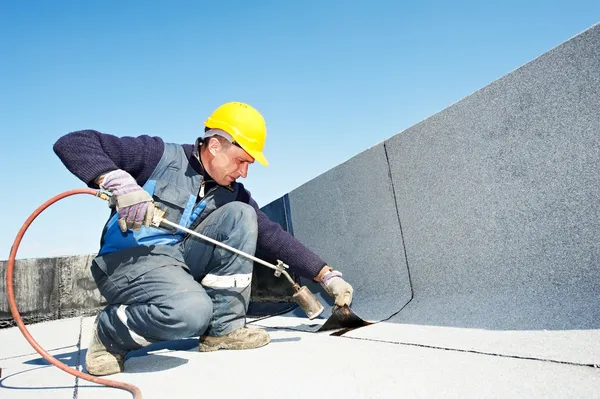How to Apply Flat Roof Coatings Like a Pro

Roof coatings are an affordable, easy-to-install option to extend the life of your flat roof they also provide waterproofing and protect against impact damage, seal seams and prevent leaks.
The first step to a successful flat roof coatings application is to thoroughly clean the surface this should be done using a pressure washer and any areas of damage should be repaired before proceeding.
Preparation
Flat roof coatings are an affordable, eco-friendly way to protect your roof from damage and water leaks these coatings seal seams, cracks and other openings, and they also reflect sunlight to reduce the amount of energy needed to heat your building.
Elastomeric roof coatings are easy to apply and can be used on many types of flat roofs, including EPDM, asphalt, PVC, single-ply, modified bitumen, concrete, and built-up roofs. These coatings are best applied in warm, sunny weather that isn’t windy or rainy.
Silicone is another type of flat roof coating that offers a variety of benefits, including the ability to withstand ponding water for up to 30 years. Its durability and flexibility make it ideal for high foot traffic areas and its resistant to abrasions to prepare for a silicone coating, you’ll need to ensure that your roof is sound and free of leaks. You’ll also need to patch low spots and repair any damaged surfaces before applying the coating.
Applying the First Coat
Over time, harsh UV rays cause roof membranes to deteriorate and leak. Often, this deterioration results in cracks or splits in seams, transition areas and laps. These issues lead to serious water damage in the structure below. Roof coatings can protect flat roof structures from these damages and extend their life significantly.
Before applying any coatings, it’s important to clean the surface of your roof thoroughly. A pressure washer is a good option, but it’s important to use a cleanser that will not damage the roof membrane or lap seams.
It’s also important to wear proper attire while working on the roof. Be sure to wear pants, long sleeves, closed-toed shoes and a hat. This will keep you from getting the coating on your skin and help shield your body from UV rays. Next, apply the PRIMER at a rate of 100-150 square feet per gallon covering the entire roof surface. Let the PRIMER dry for 4 hours before continuing.
Applying the Second Coat
A roof coating is a fast, easy-to-apply, low-cost way to protect a flat roof and ease leak-related anxiety. But before you can get started with the application, make sure the roof is in good repair. Leaks, cracks, and other damage will wear away the coating faster, so it’s important to have them repaired before you apply a roof coating.
Elastomeric roof coatings adhere best to a clean, dry surface. Check the weather forecast and try to plan your project for a sunny day that will be warm.
There are several types of flat roof coatings to choose from. Silicone coating is durable and weather-resistant, with good flexibility, tensile strength and chemical resistance. It’s also eco-friendly and is the preferred flat roof coating for areas requiring strict environmental standards. But be careful silicone is not for every type of flat roof. Other roofing solutions include butyl resins, EPDM, spray polyurethane foam and PUMA. Each has its own advantages and disadvantages.
Applying the Third Coat
Over time, harsh sun rays deteriorate and degrade the membrane of a roof. Small cracks, splits, and slits often form along seams, transitions, and laps that eventually lead to leaks. Coating a roof is an affordable and effective solution to safeguard these vulnerable areas of the structure.
It is best to apply a third coat of flat roof coating during mild, dry weather. The elastomeric coating may take longer to dry in cold temperatures or humid conditions.
Before applying the final coat, you should make sure to complete any necessary repairs. Leaks, rust, and other damage should be repaired as soon as possible before the coating process begins. Leaks and other issues left untreated can result in premature wear of the new coating. The last thing you want is to waste your hard-earned money on a costly roof restoration project. This is why it is so important to ensure that any damaged areas of the roof are properly repaired before the application of a flat roof coating.